Homemade Pizza Dough Recipe: Pizzeria Quality Pizza Crust Made Easy
This easy recipe for pizza dough will show you how I make homemade pizza quickly and easily completely from scratch. The secret to this amazing pizza dough recipe is in the minimal amount of yeast (about 1 gram for 4 pizzas) and the extra hydration (around 70%), which makes for a succulent and uniquely delicious crust.
This isn’t one of those average bland pizza dough recipes you can find online or on the back of a box. Once you master this recipe, I promise you’ll never use another one.
This Italian style/Neapolitan pizza dough recipe is ideal for thin crust pizza of all kinds, but also works just as well with pan pizza styles like Sicilian and Detroit.
This pizza dough recipe is specifically designed for a regular home oven because it has a very high hydration level. Pizza takes longer to cook in a home oven, so without the extra moisture in this recipe, the pizza base can dry out while baking. If you’re using an outdoor or indoor pizza oven, this recipe works even better.
Follow this recipe and my pizza making method below—you’ll never make a bad pizza crust again.
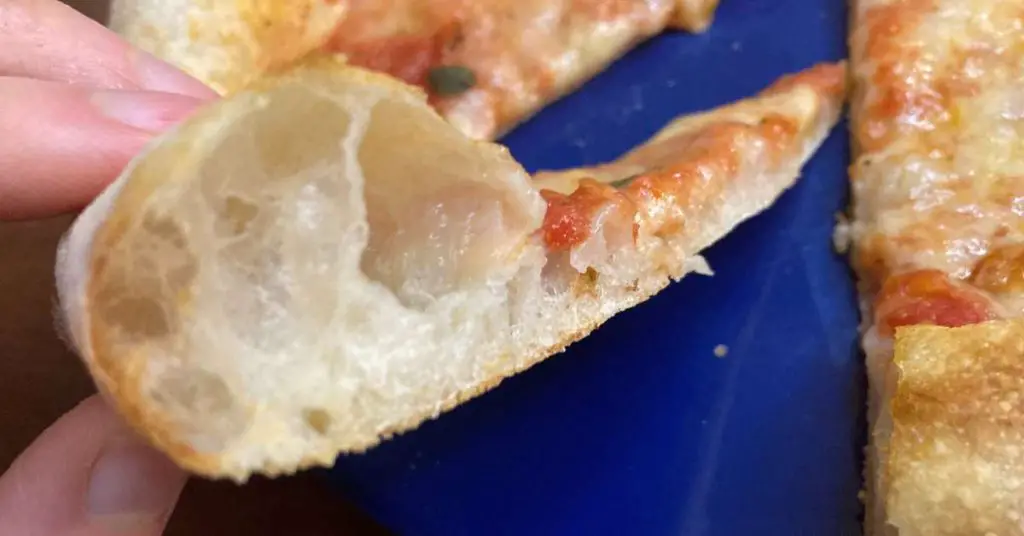
What are the steps for making homemade pizza dough?
This pizza dough recipe is great for beginners, but also perfect for experts as well. That’s because I avoid the headache of having to knead the dough (or do a “window pane” test), while the overnight double fermentation will satisfy pizza connoisseurs with its mature flavor profile and aroma. This is exactly what I set out to do when I came up with this recipe and technique years ago.
Although it might take a little while to master handling a pizza dough with so much hydration, making pizza dough using this method isn’t difficult at all.
To make this pizza dough, we’re going to follow these basic steps. To keep things as easy (and delicious) as possible, I’m going to make this pizza dough over the course of 3 days. Don’t worry, all the details are in the recipe card further down.
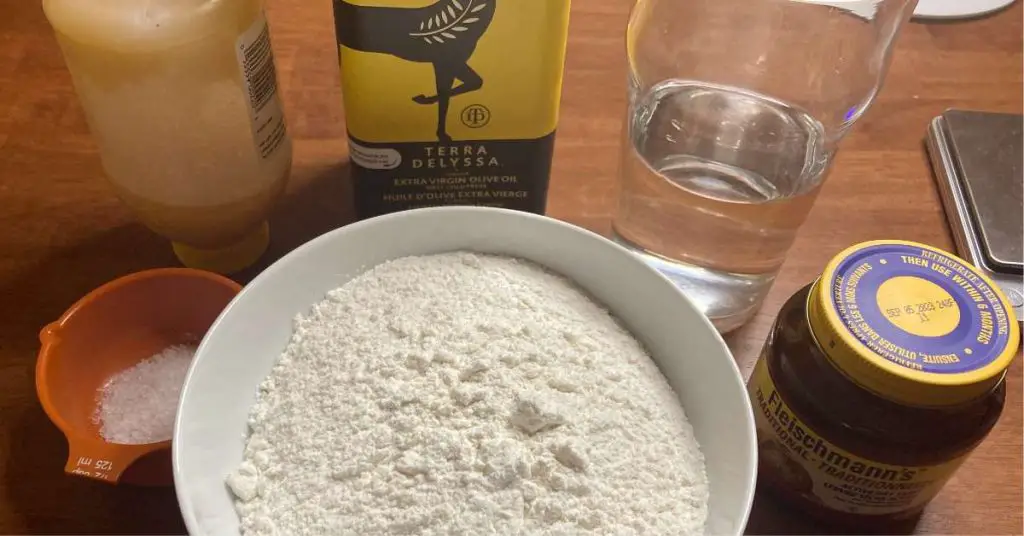
Dough Making Process In Brief
- Prepare the ingredients in a large mixing bowl and mix it until all the dry ingredients are roughly incorporated into the wet ingredients.
- Cover the bowl and let the pizza dough rise at room temperature for 3 hours.
- Three hours later, give the dough a very quick stir with a stiff spatula, then put it in a plastic container (or keep it in the bowl) and let it rest in the fridge overnight and the entire next day (the dough is fermenting during this time).
- On day 3, take the dough out of the fridge about 6-7 hours before baking. Divide the dough in half and form each half into a tight dough ball. Proof each ball at room temperature for 6 hours.
- When the dough balls are formed and proofed, drop one into a flour bath and shape it into a disk.
- Top and bake at the highest temperature your oven goes to, usually around 500F. This works best with a pizza steel or stone, but however you normally make pizza will work fine as well.
- Enjoy!
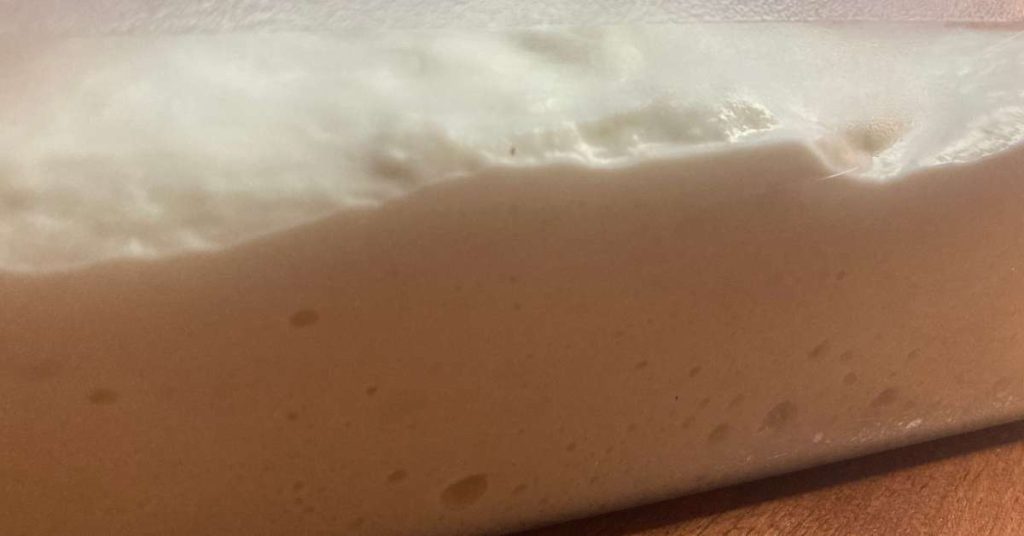
Pizza Dough Ingredients You’ll Need For This Recipe
One of the things I love about this pizza dough recipe is that while it works best with high-quality ingredients, it’s also very forgiving if you don’t. Personally, I use Caputo 00 chef’s flour, but if all you have is regular All Purpose flour or Bread Flour, it will come out just fine.
All Purpose vs 00 vs Bread Flour
Of all the ingredients needed to make pizza, flour is perhaps the most important. What kind and how much flour you use will greatly affect the texture (and taste) of the pizza. Other than the flour, most of the other ingredients and toppings, like sauce and cheese, are largely a matter of personal taste.
In general, pizza dough made with 00 flour will be soft and crispy, while a pizza dough made with bread flour will be crispy and chewy. Likewise, pizza dough made with all purpose flour will be somewhere in the middle on the spectrum of soft to chewy. A 50/50 mix of bread flour and all purpose flour can work great as well.

Better Flour = Better Dough
While you can certainly use whatever kind of flour you have at home, better flour does make a big difference. Not only in the texture and flavor of the crust, but in how easy it is to handle the raw dough without tearing.
This is because higher quality flour tends to have more protein and a higher water absorption rate than regular flour. Both protein and water absorption affect how strong the dough is as well as the texture of the crust after baking. Compare this to a low protein flour, such as cake flour, which results in a sponge like texture very different from pizza crust.
I recommend using Caputo 00 Chef’s Flour, which you can find here on Amazon or at a local shop. This flour is perfect for long fermentation times, like we’ll be employing here.
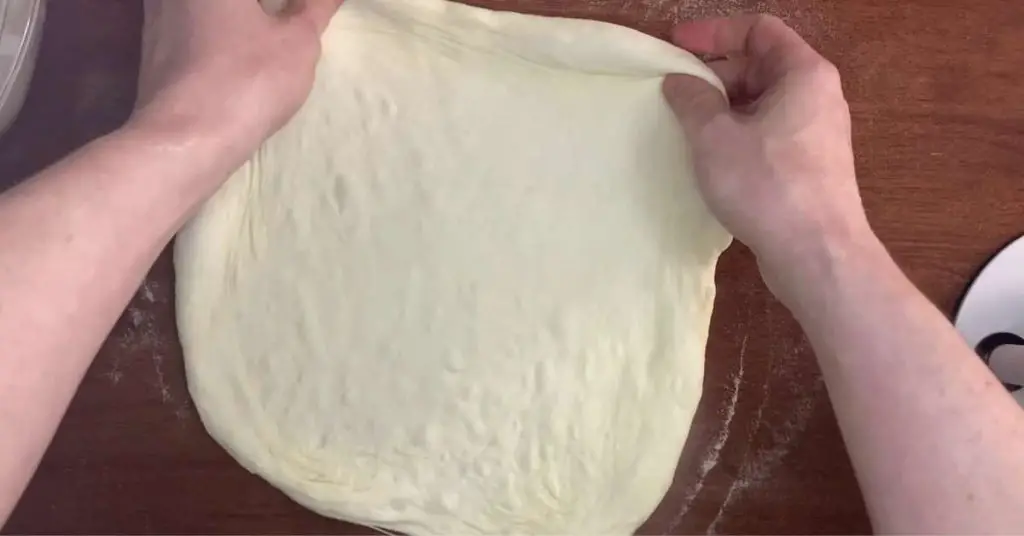
Cornmeal vs Semolina Flour
To make pizza, you need flour both for the recipe and to prevent the dough from sticking to the counter while you work on it. Ideally, you’ll want to use a different kind of flour for doing either.
For this recipe, we want regular all-purpose, 00, or bread flour. But to prevent sticking to our hands and the counter, we want to use semolina flour. Semolina flour is coarser than regular flour, so it doesn’t absorb as much moisture from the dough and gives the crust a nice texture after baking.
Many recipes call for cornmeal, and that will work fine if it’s all you have, but in my experience semolina flour is superior and much better suited for pizza. Save the cornmeal for cornbread.
Ultimately, using cornmeal or semolina is optional. You can use regular flour to prevent sticking as well, just don’t use too much or it will taste bitter after baking.
If you need good quality semolina flour, I recommend Caputo Semola, which you can find here on Amazon.
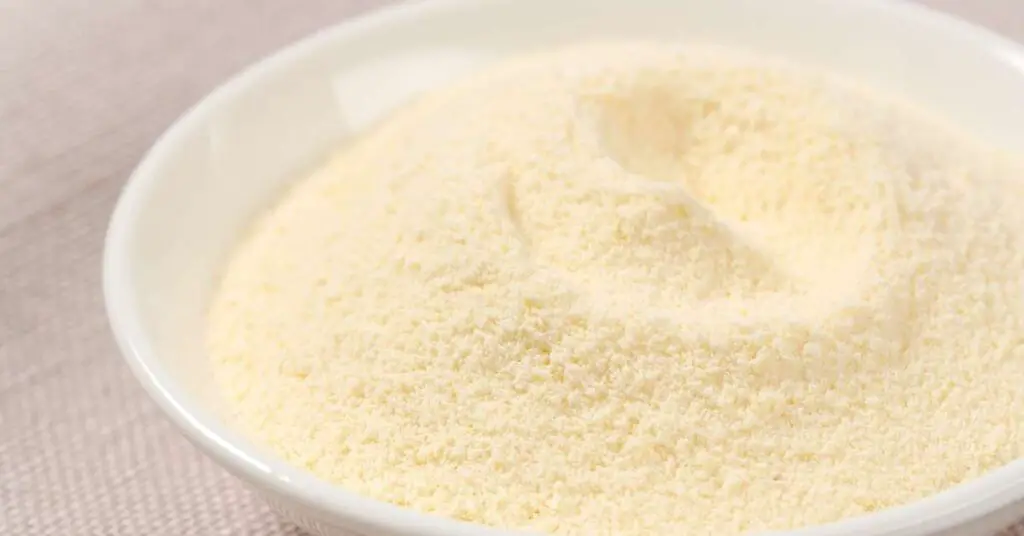
This recipe works with any kind of yeast
Yeast is another crucial ingredient when it comes to making a good pizza dough, but unlike the other ingredients the brand doesn’t matter as much so long as the yeast is viable. That said, different yeast brands produce a slightly different tasting crust, so it’s always good to experiment.
My personal favorite yeast is Caputo brand instant dry yeast. It activates fast and I appreciate its subtle flavor. If you’re interested, you can find it at a local shop, or if not, you can find it on Amazon using the link above.
This recipe is assuming instant dry yeast, but if all you have regular active dry yeast it should work fine as well. If it’s a fresh batch of yeast, you don’t need to test it, but if it’s older you can test it by mixing a spoonful of sugar with a teaspoon of yeast in a bowl of warm water. The yeast should start to foam after several minutes if the yeast is still alive.
Why Dough Rises
Dough rises when yeast activates and fills the pockets of gluten throughout the dough with c02 gas. This causes the dough to expand like a balloon, which is what causes it to rise both when proofing and while baking in the oven. A pizza dough with a good level of fermented gas will generally produce a light and fluffy crust.
For the purpose of this dough recipe for pizza, we’re going to use a minimal amount of yeast so the dough rises very slowly over a long period of time—days, if you choose to ferment it overnight or longer. By contrast, other pizza dough recipes have you use an entire packet of yeast (about 5 grams) in a single batch of dough and let it rise wildly over the course of just a few hours.
This, of course, works when you need to use a pizza dough fast. But what you gain in speed you lose in texture and flavor. A slow rise, long fermented dough not only has a better taste and texture, it digests better, too.

Homemade dough starters for pizza: poolish, biga, and sourdough
If you want to get more advanced, you can use a poolish or biga pizza dough starter, which is basically just a portion of the water and flour combined with yeast and pre-fermented before making the rest of the pizza dough. This improves the flavor of the crust and makes fermenting large quantities of dough more convenient.
Another option is to make your own homemade dough starter using wild yeast. Wild yeast exists everywhere—on our skin and even in the air. If you give it a slurry of flour and water and expose it to air long enough, it will populate with this wild yeast. This is how sourdough is made and its why it has its signature tangy flavor.
For pizza, a homemade wild yeast dough works the exact same way. There are plenty of tutorials online, so I won’t bother going into details. But it basically involves making a yeastless dough starter and waiting several days to populate with wild airborne yeast, while periodically “feeding” it fresh flour to promote growth.
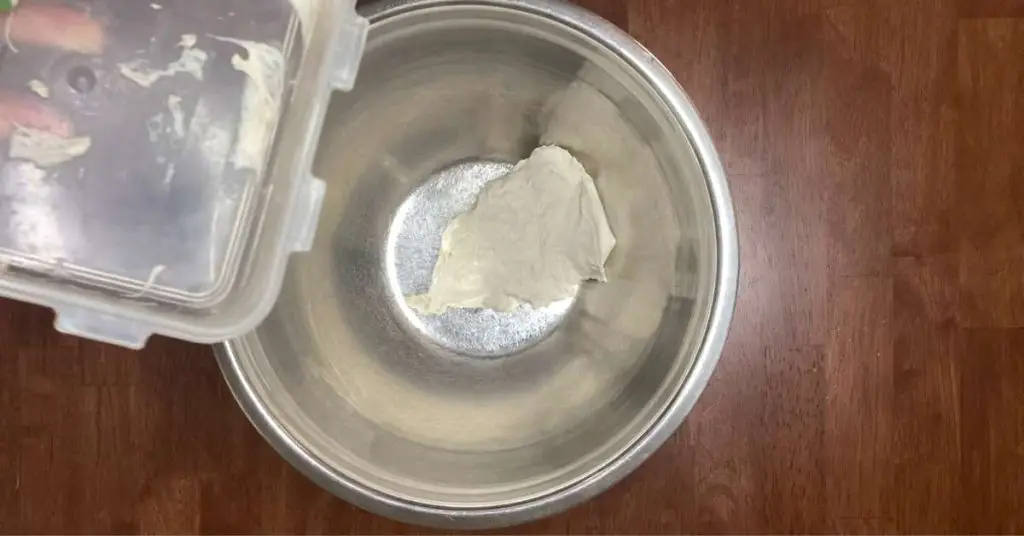
Making Pizza Sauce: Easy, Homemade
Like most things in life, the simplest solution is often the best one, and pizza sauce is no exception. The pizza sauce I use almost every time is incredibly simple, takes only a few minutes to make, and is entirely homemade.
The key to a good pizza sauce is high-quality tomatoes. It doesn’t have to be San Marzano, but in my opinion they taste the best and are the easiest to prepare. If you need good quality San Marzano tomatoes, you can find some good options on Amazon.
All I do is fish out the tomatoes from the can with a fork and place them in a mixing bowl. For a standard 28oz can of tomatoes (500g), add a ½ teaspoon of salt and a teaspoon of extra virgin olive oil. Pulse with a hand blender, or lightly mash with a potato masher, until the sauce has a smooth but slightly chunky consistency. However you like it will be fine, just don’t overdo it because it will break down while baking anyways.
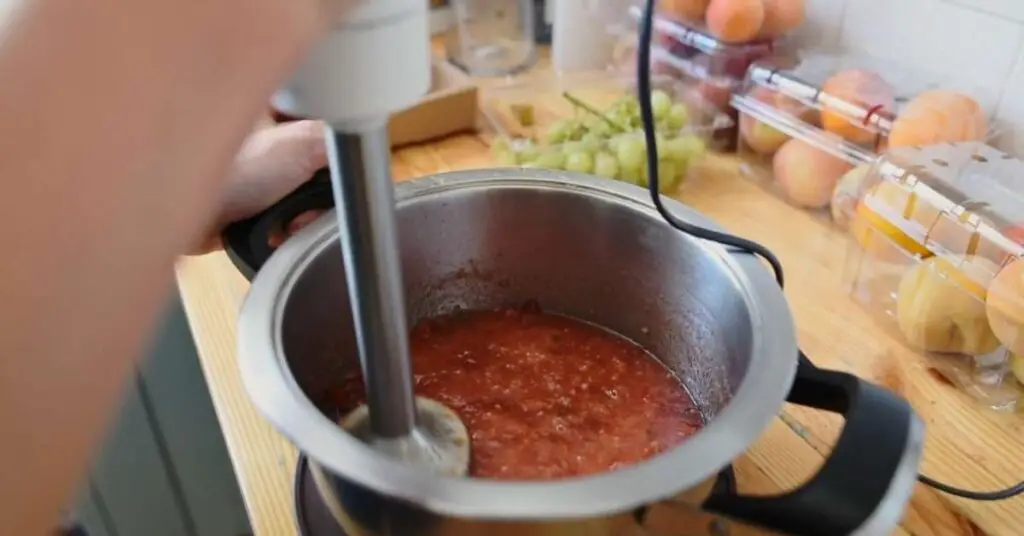
That’s really all you need to do, in my opinion. The remaining flavor will come from the ingredients and a few leaves of basil added after baking. For some styles of pizza, you may want to add a few pinches of dried oregano and black pepper as required.
Tip: If you want to freeze some of the sauce for later use, you can go ahead and do that. Just be aware that tomato sauce will have a more watery consistency after you freeze it, which can sometimes make topping the pizza more difficult. Also, be sure to wrap the sauce tightly to avoid freezer burn. It’s always best to freeze pizza sauce if you don’t plan on using it for several days or more so it doesn’t spoil.
Tools You Need For Making Homemade Pizza
All you need for making the dough is a mixing bowl and a spatula, but you’ll need a few more tools for making the pizza itself. Most importantly, you’ll need a hot surface to cook the pizza on, and some kind of a peel to transfer the pizza to and from the oven.
The hot surface can be any kind of regular pizza pans you have at home, but if you’re making a traditional or thin crust, you should consider investing in a pizza steel or a pizza stone for the best results.
Pizza Steel or Pizza Stone: The Key To Perfect Homemade Pizza Crust
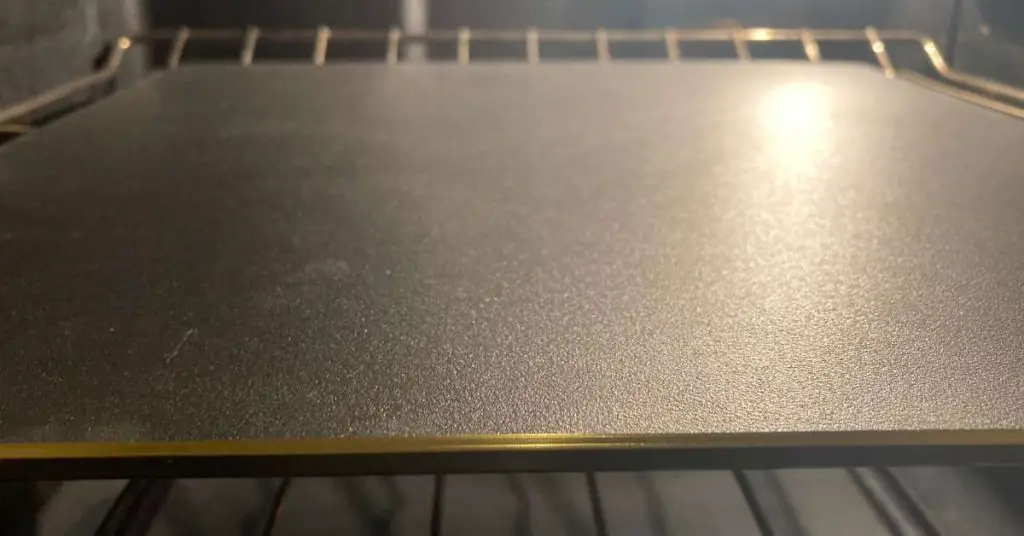
Unless you own a pizza oven, you’re most likely going to be baking your pizza in a regular home oven. This is perfectly fine, but it does come with some limitations. Namely, a regular home oven can only reach about 500F, while a pizza oven can typically reach temperatures as high as 1000F.
Luckily, there are some tools we can use to help make our regular home ovens work more like a pizza oven. One of the key features of a pizza oven is its large, flat baking surface—this is where a pizza steel or stone comes in.
A pizza steel is simply a large, flat slab of steel that gets super hot when preheated. This allows the pizza to start cooking the moment the raw dough makes contact with the hot steel. This is how I consistently bake amazing homemade pizza crust with a charred bottom, crispy exterior, and tender middle.
Alternatively, if you don’t want to spend the 100 or so dollars to buy a pizza steel, you can usually find a decent pizza stone in the 30-50 dollar range. A pizza stone works in the exact same way as a pizza steel, except it’s made of ceramic and doesn’t conduct heat as well.
The pizza steel I recommend is the Ooni Pizza Steel 13 ($99) or the Original Baking Steel ($129). If you go the pizza stone route, I recommend the Rocksheat pizza stone for $40.
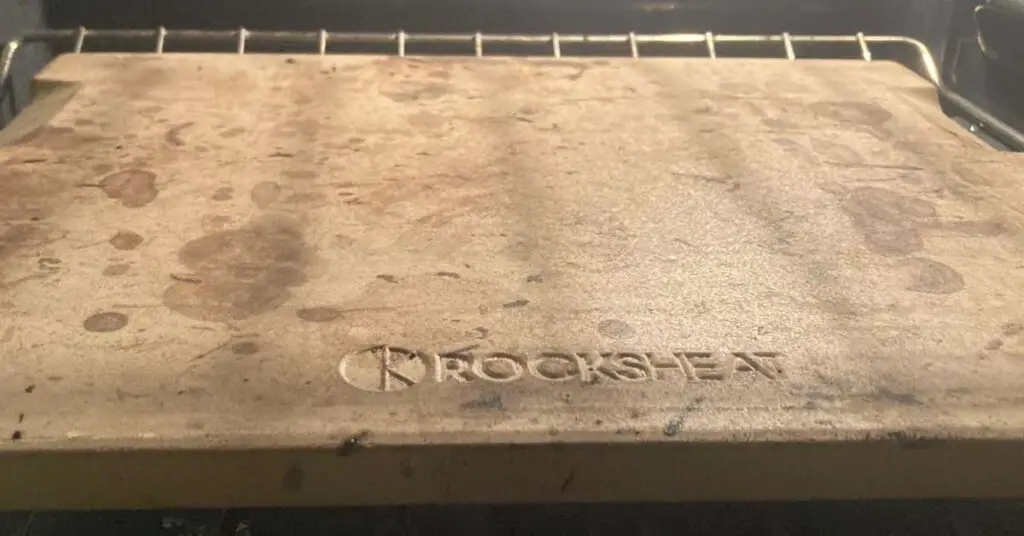
What to do After Making Homemade Pizza Dough: Balling and Stretching the Dough
In my experience, the most challenging part of making pizza is handling the pizza dough once it’s been made. This includes balling the dough, proofing the dough, and stretching the dough. At least 90% of what separates a bad or average pizza from a great one happens during these three steps.
When you take this (or any other) pizza dough out of the fridge, you can’t just throw it on the counter and start stretching it. Cold dough is brittle and won’t stretch without losing its texture and internal gluten structure. This is why proofing the dough for several hours is so important.
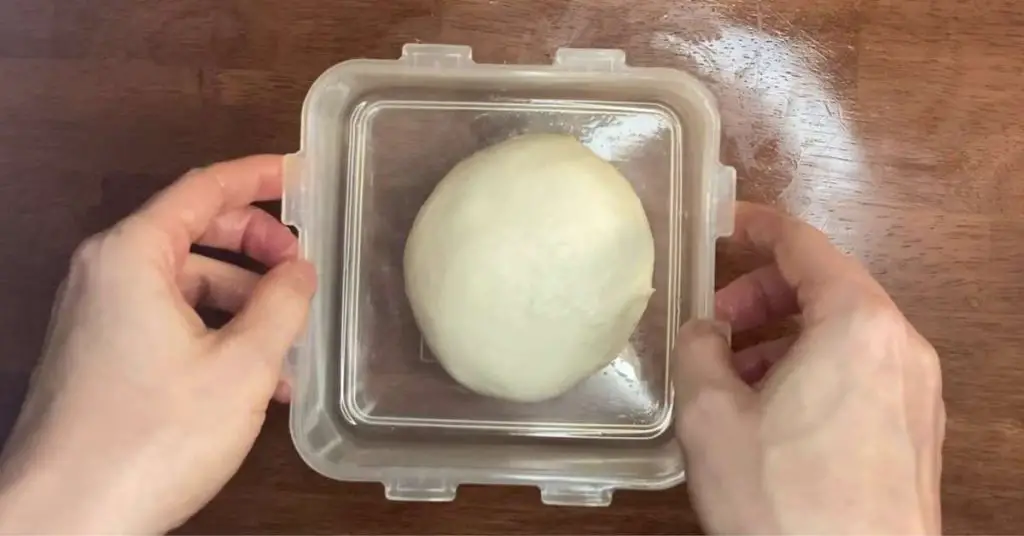
To proof the pizza dough, lightly oil a resealable container and set it aside. Then, divide the dough into equal portions and roll each piece into a tight ball. This might sound simple (and it is) but you have to do it correctly. If you’ve never rolled dough before, check out my pizza dough balling tutorial here.
When balling dough for proofing, it’s always a good idea to lightly oil your hands to prevent sticking. All you need is a very small amount of oil, so don’t overdo it or you might throw off the balance of the other ingredients.
After the dough is proofed, you’ll need to stretch it. If you’ve never stretched pizza dough before, I recommend looking at my tutorial for the best results. You can find my tutorial on hand stretching pizza dough here.
Pizza Dough Recipe
Making this pizza dough recipe is easy, whether you plan on following my overnight fermentation method or decide to knead it yourself by hand. One thing I’ll emphasize, though, is that the longer you let the dough rest/rise, and the less yeast you use, the better the pizza dough will taste.
For many people, this pizza dough recipe is all they need. But if you need instructions on preparing and baking the pizza, be sure to read my notes on this above and follow the links to my tutorial pages (with video) on balling, proofing, and stretching pizza dough.
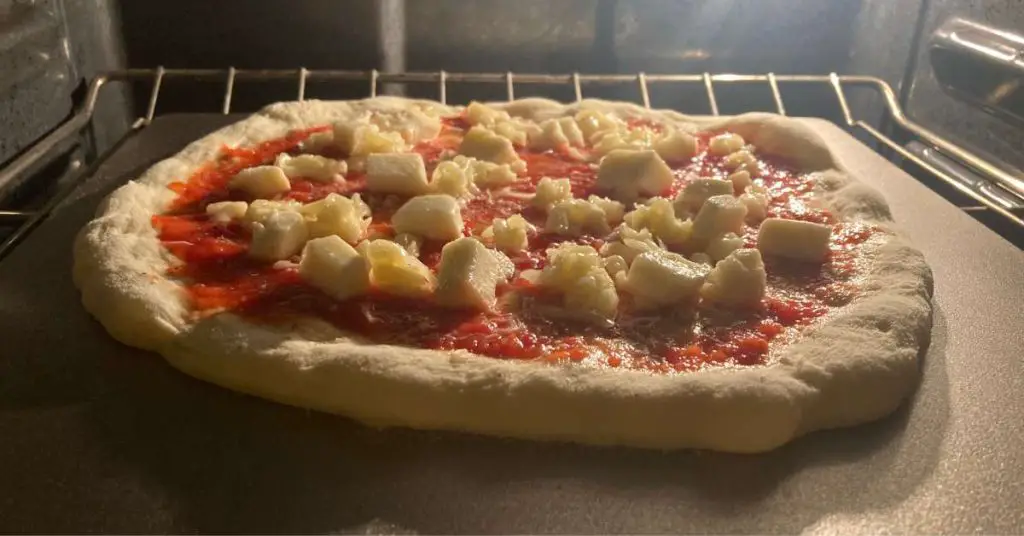
This recipe will produce enough dough for four (4) 12 inch pizzas, but if you want more or less you can adjust it using the drop down menu. A double batch of this dough will produce enough for 8 pizzas, or you can cut it in half for only 2 pizzas. I recommend making enough for however many pizzas you want, then freeze the rest. Be sure to wrap the dough tightly to prevent freezer burn.
Note: This recipe uses metric measurements because it’s more accurate and convenient than cups and spoons. You can easily convert these measurements to imperial yourself if you prefer. That said, you can get a digital kitchen scale on Amazon for less than $20. If you want an even better one, Ooni carries an amazing dual kitchen scale that works well with large and small measurements.
Rough timeline we’ll be following for this dough:
- Day 1: Mix the ingredients and let it rest at room temperature overnight.
- Day 2: Place the dough in the fridge for 24 hours of cold-fermentation.
- Day 3: Take the dough out of the fridge 6 hours before baking, divide it up, ball it, proof it, and make the pizza.

Ooni Pizza Dough Recipe – 65% Hydration, No-Kneading
Ingredients
- 300 g Tipo 00 or Bread flour (2.4 cups) Note: All purpose works as well, as long as it's high in gluten and protein. If the flour is weak, the dough will be as well.
- 200 ml Lukewarm Water (0.8 cups)
- 1/4 tsp Active or Instant Dry Yeast Note: If you plan on using the dough sooner than 24 hours, triple the yeast. More yeast = faster rise but less flavor.
- 9 g Fine Sea Salt (1.5 tsp)
- 7 g Extra Virgin Olive Oil (1.5 tsp) Optional: Improves stretch and softness of dough, but not strictly necessary.
- 9 g Honey (0.5 tbsp) Optional: Not necessary when using an Ooni pizza oven unless you want an extra dark and crispy crust. Great for American styles, not needed for Neapolitan.
Instructions
Ingredients Prep
- First, measure out the water and yeast in a large mixing bowl. Stir lightly until the yeast is fully hydrated and the water is a slightly brown color.
- Set the mixing bowl with water and yeast to the side. In another bowl, measure out the flour and salt. Gently mix the salt into the flour using your finger.
- Have your olive oil ready somewhere nearby. We’re not going to add this into the recipe until about halfway through the process.
Mixing The Ingredients
- Using a hard spatula or wooden spoon, start to slowly stir the flour and salt mixture into the bowl of water and yeast. I find it’s best to mix in a few spoonfuls of flour at a time rather than dumping it all in at once. Do this until you’ve mixed in roughly 75% of the flour.
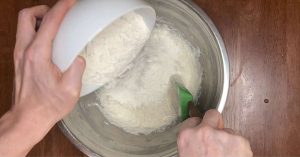
- Optional: When roughly 75% of the flour is mixed into the water, add the tablespoon of extra virgin olive oil and fully incorporate it into the dough mixture.
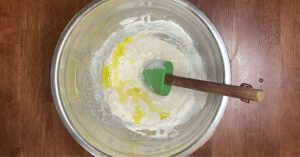
- Mix the remaining 25% if flour into the rest of the ingredients. You can stop mixing when you can’t see anymore dry flour in the bowl. It should be a rough, shaggy ball of dough.
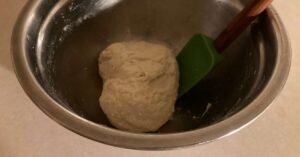
Preparing The Dough (No-Knead Method)
- Cover the bowl tightly with an air-tight lid or plastic wrap and let it sit at room temperature for approximately 15 minutes.
- After 15 minutes, come back and give the dough another mix with the spatula. You should find that the dough is much smoother and less sticky because of gluten development. Turn and fold the dough onto itself for another 1-2 minutes and cover it back up tightly.
- Let the dough rest at room temperature for 2-3 hours, then place it in the fridge to cold-ferment overnight. 24 hours is ideal, but 48-72 is better. Longer fermentation = better taste and texture.
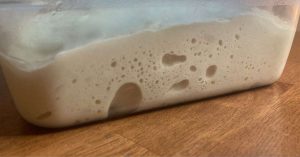
- The dough won't rise much in the fridge, or in the 2-3 hours before due to the minimal amount of yeast used in the recipe. This is normal, but you should notice some changes in texture and bubbles forming. When the dough is balled and proofed later, each dough ball will approximately double in size.
- Take the dough from the fridge and divide it in half into two 250 gram dough balls. While the dough is cold, handling will be easy but you can (very) lightly coat your hands in olive oil to avoid sticking.
Proof The Dough Balls
- Form each piece of dough into tight balls. If you need help with this step, follow my tutorial on dough balling below. Place each dough ball into a lightly oiled resealable container. Let the dough "proof" in its container at room temperature for 4-6 hours. The dough ball will expand (about x2) and become light and airy.Note: The warmer the room, the faster the dough will proof. If its too warm or left too long, the dough will "overproof", which degrades its structure and taste.https://www.myhouseofpizza.com/how-to-shape-pizza-dough-ball-proofing-guide/
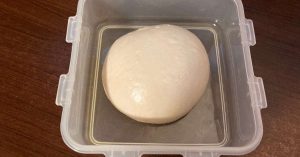
- When the dough is fully proofed, it will look something like this.
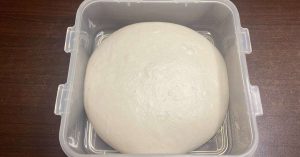
Making The Pizza
- When the dough is fully proofed, get a large container full of semolina flour, or just make a pile on a clean counter. Flip the oiled container with the dough upside down and it should slide out into the flour. Flip the dough over to coat all sides with flour, but be careful not to squeeze the dough or ruin its shape. This is called a "flour bath".
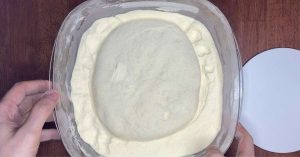
- At this point, you can prepare the dough however you're accustomed to, but I recommend stretching by hand by carefully pressing from the middle of the dough ball outwards to move the air into the outer edges. Don't pinch the edges if you want a puffy crust.Don't be afraid to use as much semolina as necessary to avoid sticking, but only use it to coat the dough, don't knead it it or you risk changing the hydration ratio.If you need a visual guide for stretching pizza dough by hand, check out my tutorial below:https://www.myhouseofpizza.com/how-to-hand-stretch-pizza-dough/
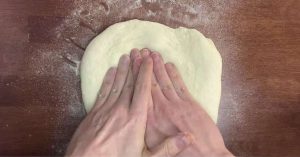
- When the dough is stretched to your liking, carefully transfer to a floured pizza peel (you can slide it on, or carefully lift it from underneath), then top it with your preferred toppings and give the peel a shake to make sure it isn't sticking. Give the dough a final stretch by carefully pulling the edges in each direction (don't pinch) and quickly launch it into your Ooni pizza oven. If you used enough flour on the peel, and haven't overloaded with wet toppings, it should slide off easily without losing its shape. It it doesn't, use more semolina next time.

Notes
Pizza Instructions:
I’ll keep this section brief because I assume many of you already have a method for making pizza and just need a dough recipe. But if you need help with this, or just want to know the secret to my pizza recipe, keep reading.
- Make the pizza dough, divide it up, ball it, and let the dough ball you plan on using proof for about 6 hours. Any dough you don’t plan on using within the next couple of days you can wrap up and freeze for future meals.
- Preheat a pizza stone or pizza steel at the maximum temperature for at least an hour.
- Drop the proof dough ball into a flour bath and carefully turn it over to make sure it’s entirely covered in semolina flour. This allows you to shape the dough without it sticking to your hands or the counter.
- Lightly flour a clean surface and carefully transfer the pizza dough to it. The dough should be slightly flattened (from gravity) and very relaxed at this point.
- Using your hands, gently press the dough into the desired shape by starting from the middle and pressing the air out into the edges. You want to be very gentle with the dough here—the goal is not to violently “flatten” it, just gently press it into the right shape.
- At this point, the dough should be about 6-7 inches wide. Next, carefully place the dough onto your knuckles and gently pull outwards with your fingers extended. Be careful not to stretch too much or puncture the dough with your hands.
- At this point, the pizza dough should be about 9-10 inches wide. At this point, we can transfer the dough to a lightly floured pizza peel to add toppings.
- With the dough on the peel, carefully add sauce, cheese, and whatever other toppings you like on your pizza. I recommend not going overboard here—you only need about 80-100 grams of cheese for a 12 inch pizza. Be aware that the quality of the crust will suffer if it’s laden with too many watery toppings and sauce. Be sure to leave about a 1 inch margin along the edge of the crust so the toppings don’t spill over onto the pizza steel.
- Give the peel a quick jiggle to ensure the pizza isn’t sticking then slide your fingers underneath and give it a final, very careful, stretch. The pizza should be about 12 inches at this point.
- Place the pizza peel at about a 45 degree angle with the back of the pizza steel and wiggle it slightly as you pull back. If all goes well, the pizza should slide right onto the steel. This part can take a bit of practice, so don’t be discouraged if the pizza is slightly misshapen—this is usually an indication that the dough was sticking on one side on the way down, so use more flour next time.
- In my home oven, a pizza usually takes 7-9 minutes to fully cook, but your time may vary. I recommend setting a timer for 10 minutes just to keep track of how long it’s been cooking for future reference. After about 5 minutes, use the peel to rotate the crust 180 degrees so it cooks evenly while baking.
- After 5 minutes, you should notice some light browning on the top of the crust and some black spots on the underside. This is a good sign and means the crust is baking how we want it. Continue baking the pizza for another 4-5 minutes until the cheese is bubbling quickly, but not to the point where there are crusted brown spots (unless you like that).
- Take the pizza out of the oven and place it directly on the cooling rack for a few minutes before cutting into it. This ensures that any steam has a chance to escape the underside of the crust to prevent sogginess.
Related Questions:
What is the secret to making good pizza dough?
Good pizza dough is a product of the ingredients you choose and the method you use to make it. I recommend using a good quality 00 or AP/Bread flour blend and allowing it to cold-ferment overnight. Use as little yeast as possible to ensure a slow rise and a mature flavor profile for the crust.
What are the steps for making pizza dough?
To make pizza dough, you want to first mix water, flour, yeast, salt, olive oil, and honey in a large mixing bowl. When the ingredients are mixed, let the dough rise at room temperature for several hours then transfer it to the fridge to cold ferment. When you’re ready to use the dough, divide it up, ball it, and proof it until it returns to room temperature, then stretch and bake it to your preference.
Does homemade pizza dough need to rise?
If your homemade dough is made with yeast, then yes it needs to rise. When dough is rising, that means the yeast is consuming the flour and creating gas as a byproduct that expands the dough. The yeast needs this time to prepare the dough for baking as well as develop the kind of flavor profile that separates pizza crust from regular bread.
What flour is best for pizza dough?
The best flour for pizza dough is whatever flour you have available to you. That said, I always recommend Caputo brand 00 Chef’s Flour because it’s perfect for long fermentation periods. If you don’t have access to this kind of flour, you can always use regular AP flour, or a blend of AP and bread flour. Bread flour will give the crust a chewier texture while 00 flour produces a softer crust similar to Neapolitan style.


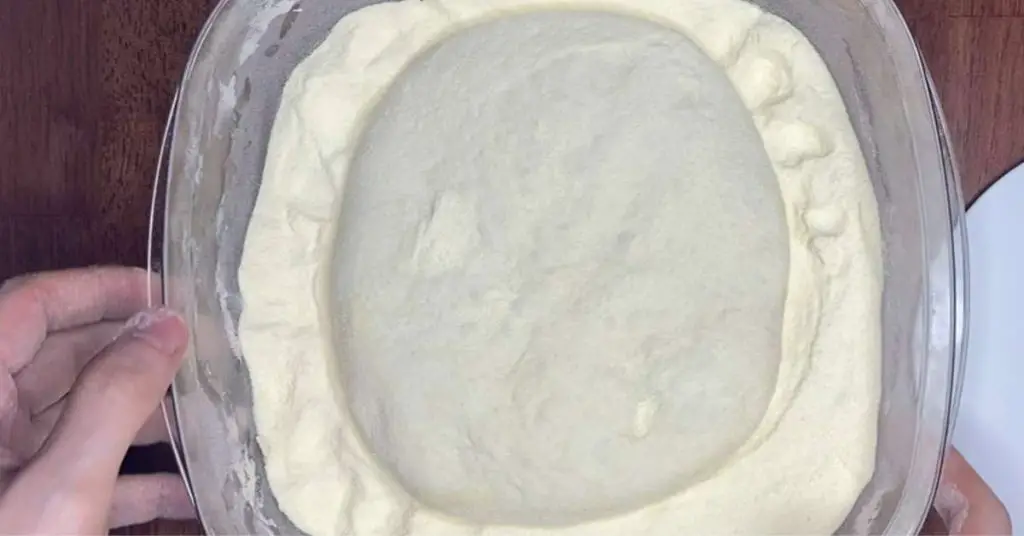
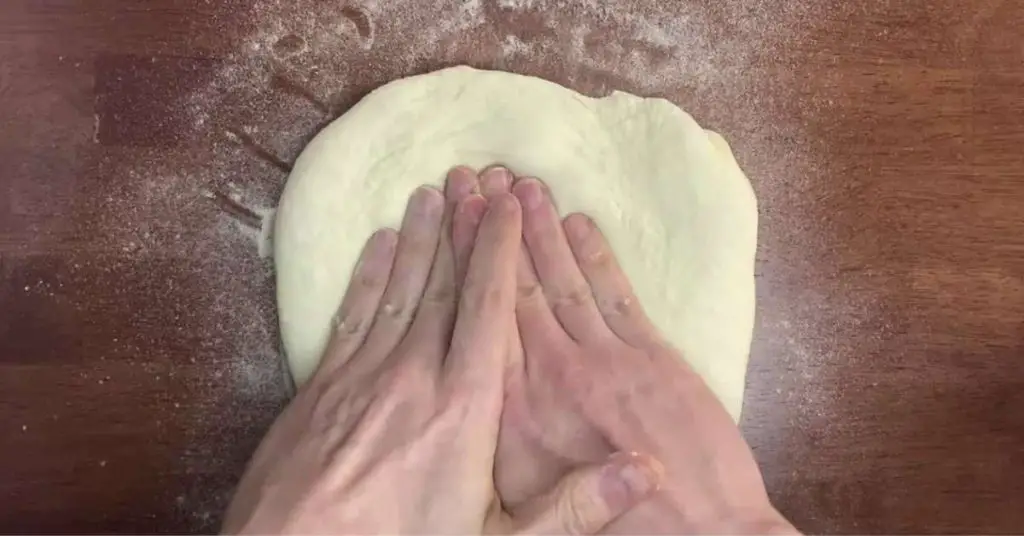
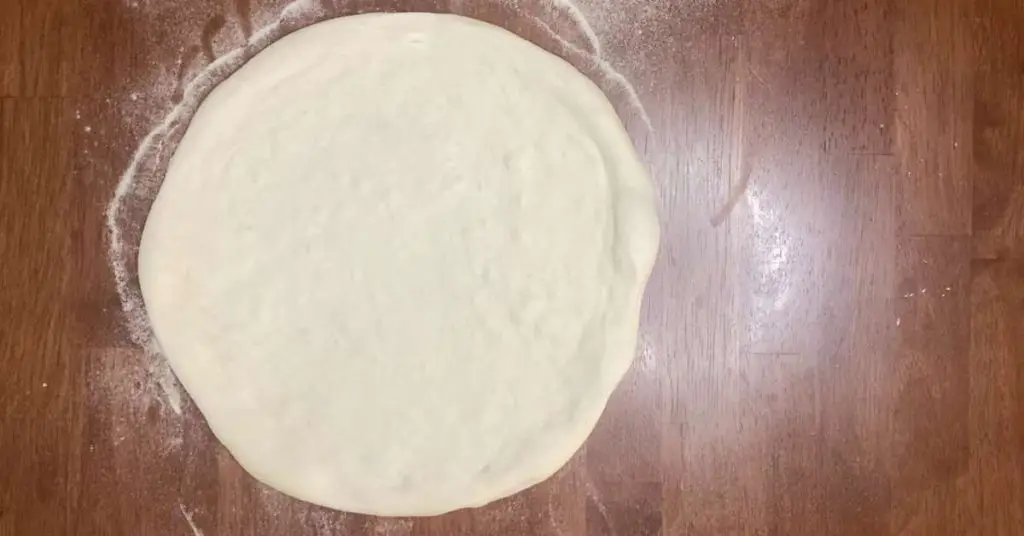
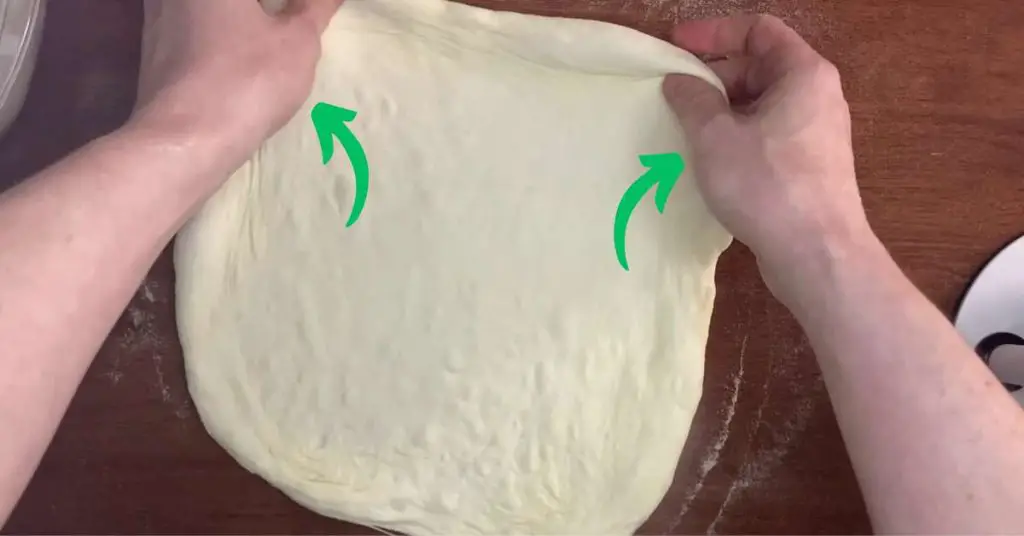
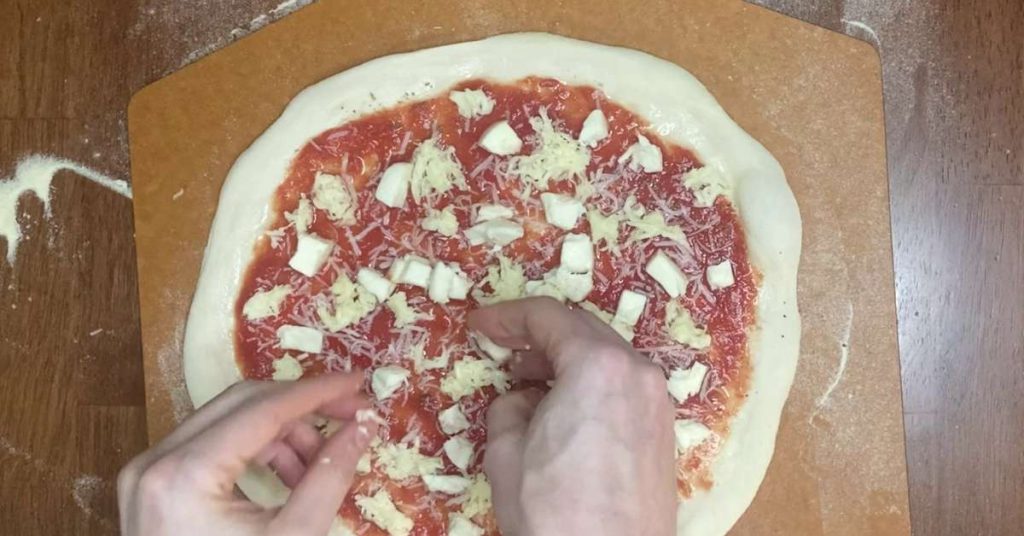
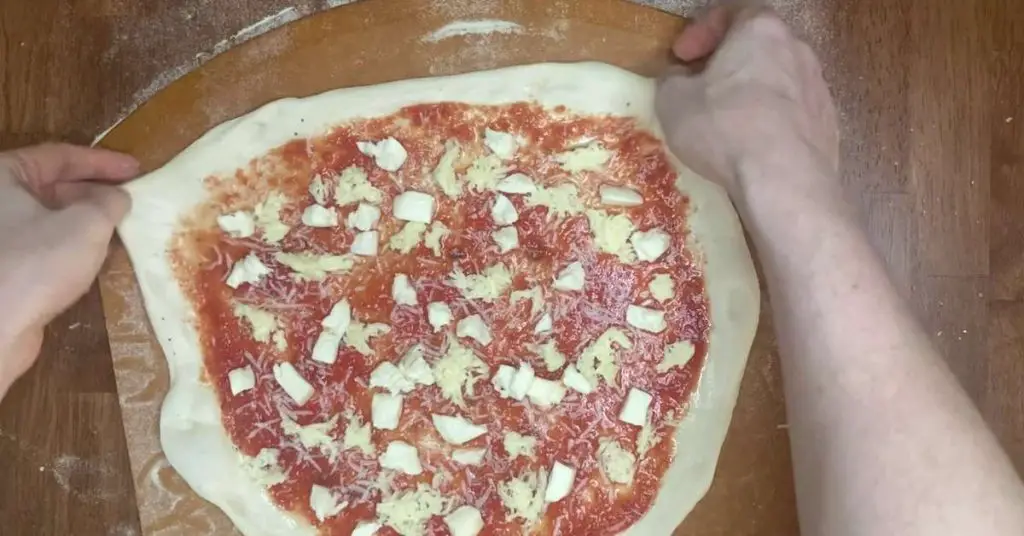
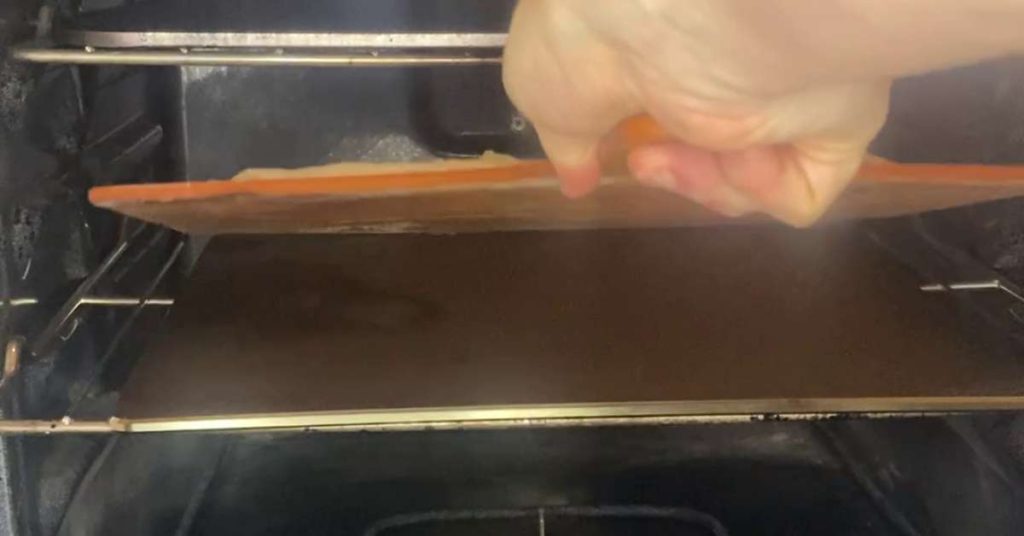
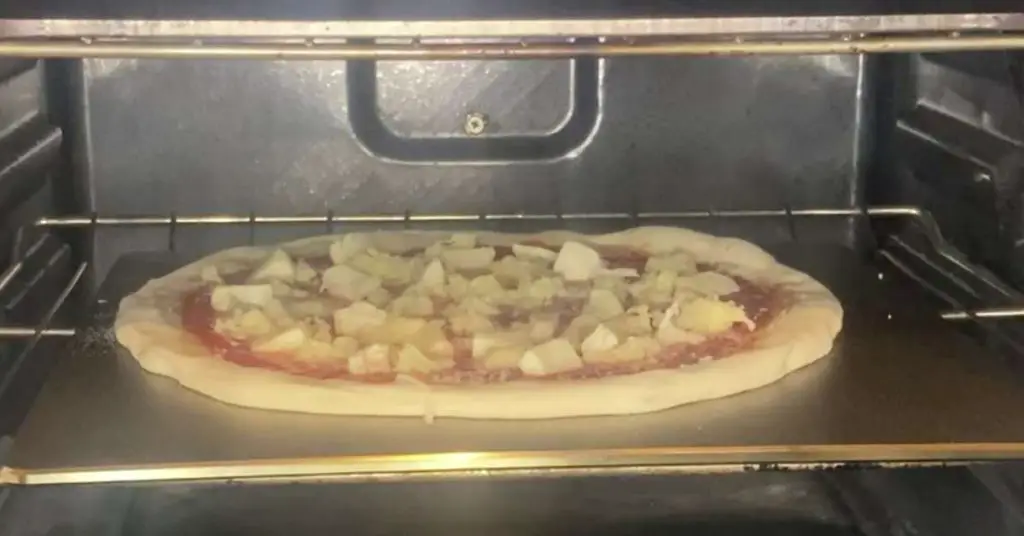



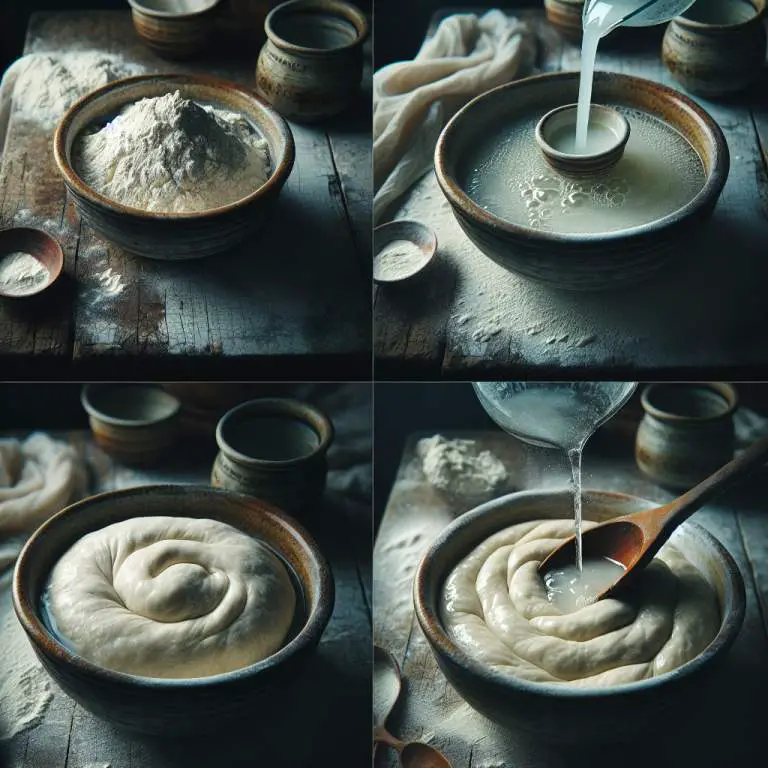
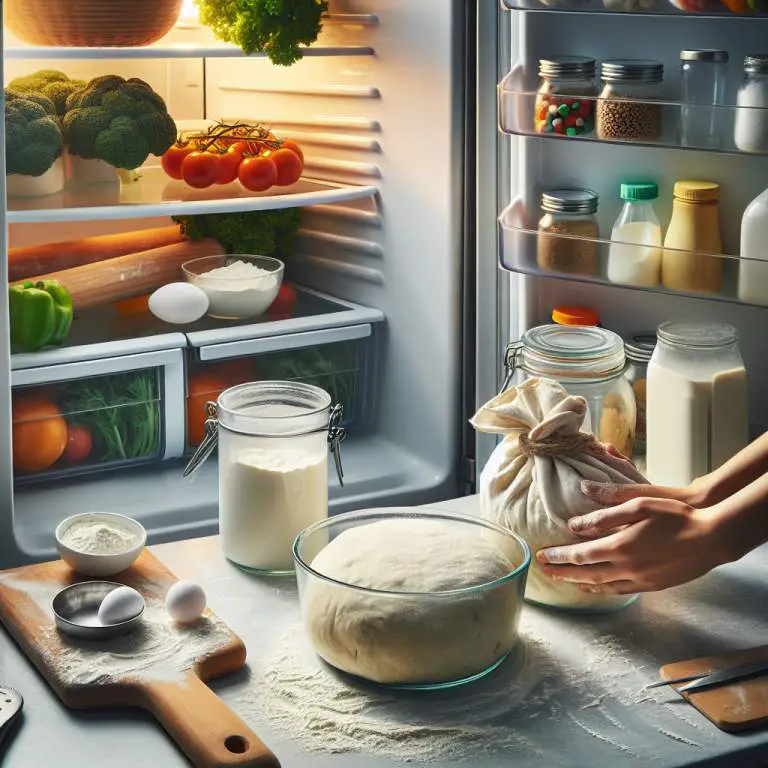
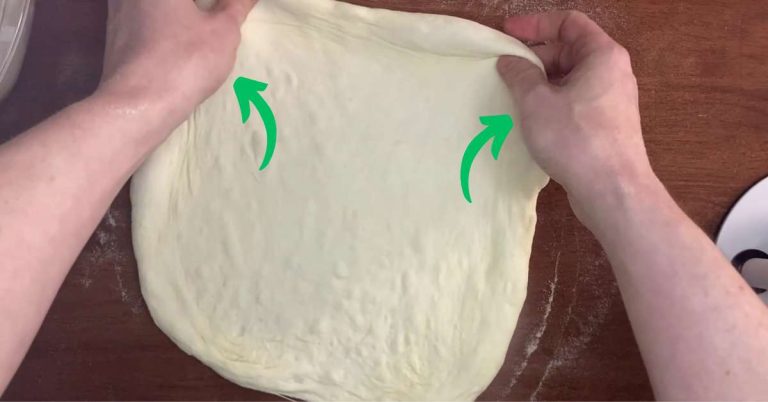
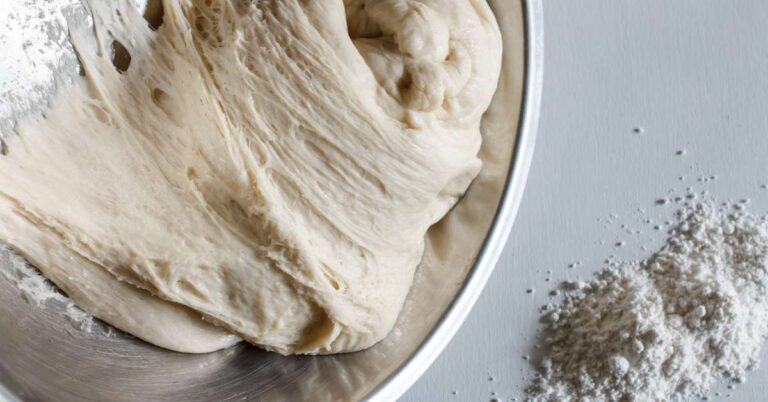
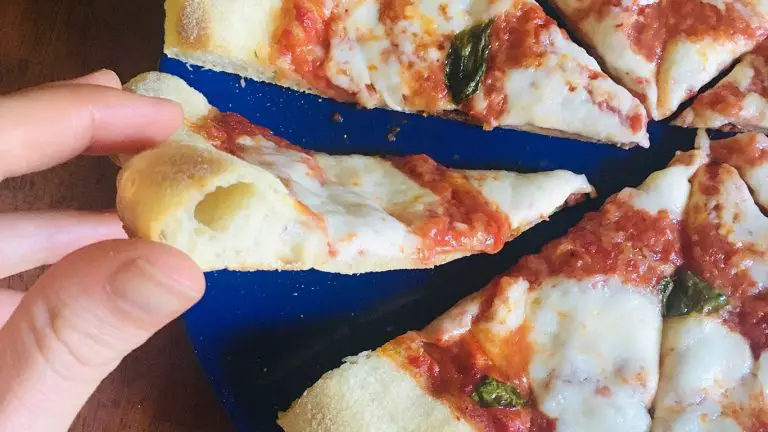
Hi Domenic, I made this dough a few weeks ago and it was heavenly. But then when I made it again recently the dough didn’t rise that much in the proofing container and the crust baked kind of flat. Both times I let the dough proof for 4 hours at room temperature like you recommend. Any idea why that might happen?
Hey, Anne. Glad you enjoyed the recipe the first time!
That’s actually a really common issue that happens with dough, especially when you’re using a minimal amount of yeast like I recommend.
Assuming you followed the recipe correctly and used the right amount of yeast, my guess is that your “room temperature” was actually colder the second time around during proofing. The fix is easy: just let it proof longer.
As you get more experienced making dough, you’ll start to notice the differences during different times of the year and even different times of day. Generally, the warmer your room is the quicker the dough will proof… sometimes too quickly.
If 4 hours was long enough the first time, that means under slightly colder conditions you might need to give it 5 or 6 hours. That should be long enough for the gluten in the dough ball to relax and for the yeast to build up enough gas to expand the dough. This is key to the kind of light and fluffy crust we’re all aiming for (or at least I am).
You’ll notice your dough “evolve” as it proofs: it will start off as a small, tight ball when you shape it from cold dough out of the fridge. After 1-2 hours, it will flatten but still remain small. Then during the next few hours, the flattened dough ball will expand outwards and rise up as it fills with gas. When the dough is noticeably larger and airy looking, it’s ready to go.
That said, if you start noticing huge individual bubbles popping off the dough, you either waited too long, the room was too warm, or you used too much yeast…maybe even all three!
If all else fails and you really want your dough to rise faster, you can always double the yeast from .45 grams to 1 gram (or more), but in my opinion the crust won’t taste as good.
I hope this helps!